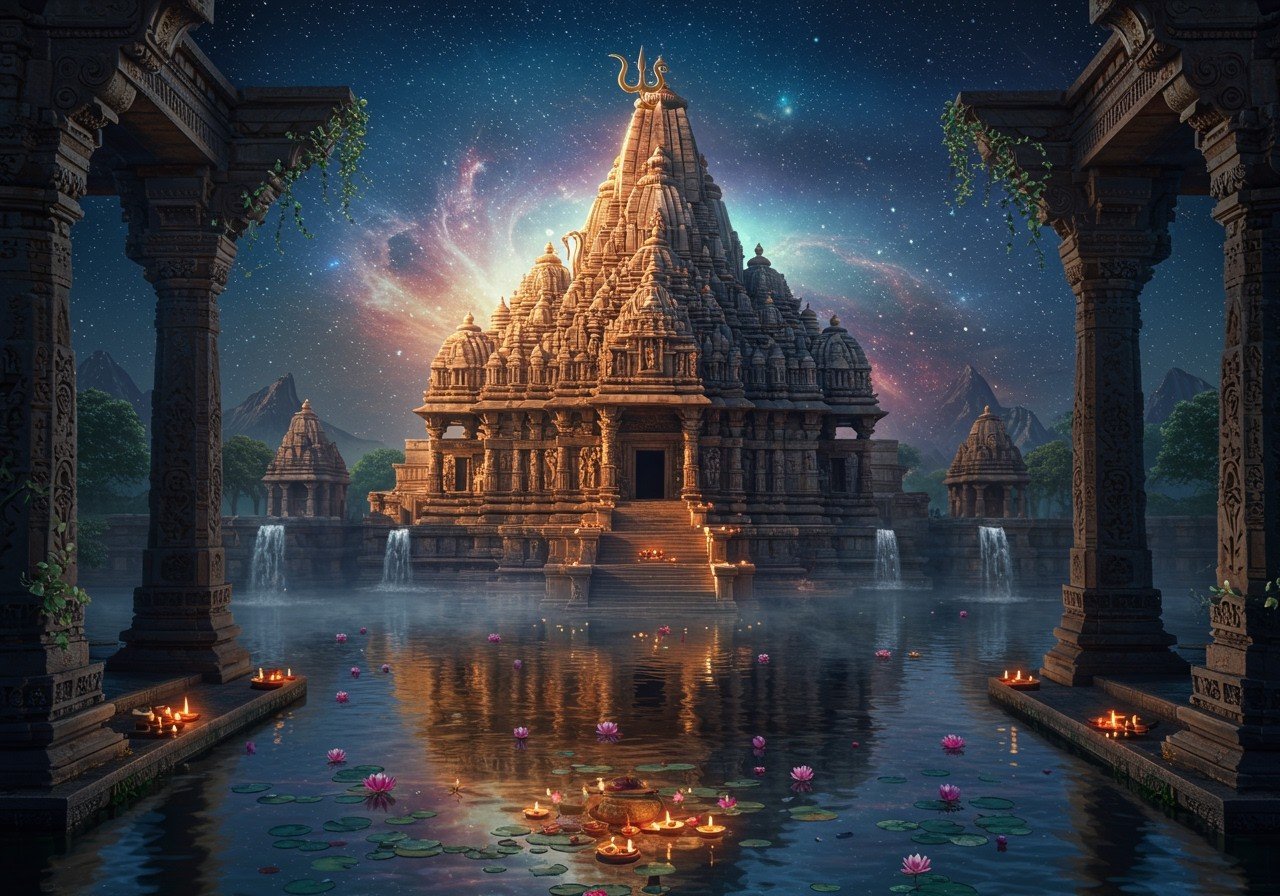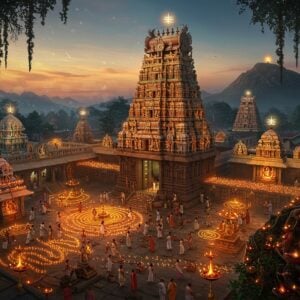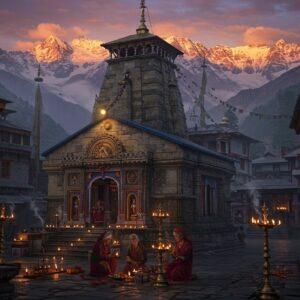
India’s ancient Shiva temples are more than just places of worship; they are spiritual anchors, architectural wonders, and testaments to India’s rich cultural heritage. These sacred spaces, with their unique designs and intricate carvings, hold deep significance for devotees and anyone who appreciates architectural brilliance. Stepping into these temples is like stepping back in time, connecting with centuries of devotion and artistic expression.
Architectural Styles and Influences
Across the diverse landscape of India, Shiva temples showcase a mesmerizing variety of architectural styles, each influenced by geographical, climatic, and cultural nuances. These variations add to the richness and spiritual depth of these sacred sites. The major architectural classifications include:
- Nagara: This style, prominent in North India, is characterized by its curvilinear towers, known as shikharas, and elaborate ornamentation. The Kashi Vishwanath Temple in Varanasi, Uttar Pradesh, stands as a magnificent example of the Nagara style, its towering shikharas reaching towards the heavens, embodying spiritual aspiration. Think of the graceful curves of a mountain, reflected in the temple’s silhouette, inviting the divine presence.
- Dravidian: Predominant in South India, this style features towering gopurams (entrance gateways), intricate pillar-filled halls (mandapas), and pyramidal towers called vimanas above the sanctum sanctorum. These majestic structures evoke a sense of awe and reverence. The Brihadeeswarar Temple in Thanjavur, Tamil Nadu, a masterpiece of Chola architecture, exemplifies this style, with its towering vimana and massive Nandi statue carved from a single stone, radiating power and devotion.
- Vesara: This hybrid style, prevalent in the Deccan region, beautifully blends elements of both Nagara and Dravidian styles. It represents a harmonious fusion of architectural traditions. The Kailashnath Temple in Ellora, Maharashtra, an awe-inspiring monolithic structure carved out of a single rock, stands as a testament to this unique blend, showcasing the intricate details of Dravidian artistry combined with the curvilinear elegance of the Nagara style.
Examples of Notable Shiva Temples
Let us journey through some of India’s most revered Shiva temples, each a unique expression of devotion and architectural brilliance:
- Ramanathaswamy Temple, Rameswaram, Tamil Nadu: Known for its breathtaking corridor, the longest among Indian temples, it features 1,212 intricately sculpted pillars and 22 wells, each with its own unique significance, a testament to the dedication of the artisans and the spiritual depth of the temple.
- Meenakshi Amman Temple, Madurai, Tamil Nadu: Dedicated to both Lord Shiva (as Sundareswarar) and Goddess Parvati (as Meenakshi), this temple is a vibrant celebration of divine union. Its magnificent gopurams, covered in a riot of colors and intricate sculptures, tell stories of devotion and mythology, drawing pilgrims and art lovers alike.
- Somnath Temple, Gujarat: This historic temple, which has been rebuilt several times, reflects resilience and unwavering faith. Its architecture showcases the Chalukya style, known for its intricate carvings and robust structure, standing as a symbol of enduring devotion through the ages.
- Ekambaranathar Temple, Kanchipuram, Tamil Nadu: The largest and most ancient Shiva temple in Kanchipuram, this temple is a masterpiece of Dravidian architecture, its towering gopurams and serene atmosphere inspiring peace and reflection.
- Srikalahasti Temple, Andhra Pradesh: Known for its Vayu Linga, representing the element of air, this temple is revered for its spiritual significance and architectural beauty.
- Kapaleeshwarar Temple, Chennai, Tamil Nadu: A gem of Dravidian architecture in Chennai, this temple’s vibrant gopuram stands tall amidst the bustling city, offering a sanctuary of peace and connection to the divine.
- Dravidian Temples: A Guide to Their Key Architectural Features: Deepen your understanding of Dravidian temple architecture with this insightful guide.
- Exploring Dravidian Architecture: South India’s Ancient Temples: Embark on a virtual journey through the magnificent Dravidian temples of South India.
Symbolism and Significance
Every element of a Shiva temple is imbued with symbolic meaning, reflecting a deep understanding of cosmic principles. The layout often aligns with the concept of the universe, with Mount Kailash, Shiva’s abode, as the central axis. Sacred geometry plays a crucial role in the design, with towering shikharas symbolizing spiritual ascent and intricate carvings narrating religious stories and philosophical concepts. These elements create a sacred space where devotees can connect with the divine.
Enhance Your Spiritual Journey with Poojn.in
At poojn.in, we understand the deep significance of these sacred spaces and the rituals that connect us to the divine. Whether you’re planning a visit to one of these magnificent temples or seeking to create a sacred space in your home, we offer a wide range of authentic puja items to support your spiritual journey. You can find everything you need, from pure copper kalash and panchamrit containers for abhishekam, to traditional dhoop and agarbatti made with natural ingredients, to beautiful brass and copper bells with sacred inscriptions.
We also have a curated selection of Lord Shiva murtis, crafted with utmost care and reverence, to bring the divine presence into your home. Our copper snakes and brass trishuls, crafted with traditional techniques, are perfect for adding a touch of authenticity to your Shiva lingam puja.
For those who prefer to offer murtis made with the ancient ashta dhatu, we offer a beautiful selection of Goddess Lakshmi murtis. Explore our collection today and discover the perfect items to enrich your spiritual practice.
Conclusion
India’s Shiva temples are not mere structures; they are living embodiments of art, faith, and cultural heritage. They stand as a testament to the devotion and architectural ingenuity of generations past, inviting us to connect with the sacred and experience the profound peace that resides within these ancient walls. Explore these marvels, either in person or through virtual journeys, and allow their beauty and symbolism to inspire a deeper appreciation for India’s rich spiritual tapestry.


